(NLDO)- Buffalo skin taro soup is one of the indispensable rustic dishes during Tet holiday of ethnic minorities in Thanh Hoa mountainous region, especially Thai people.
Thanh Hoa has many delicious dishes that are famous nationwide such as nem chua, goi nhech, cha tom, banh rang bua… but few people know that in the mountainous districts of Thanh Hoa province, there are also many attractive dishes, imbued with the culinary culture of the ethnic minorities here. Among them, we must mention the taro soup cooked with buffalo skin of the Thai people, a rustic dish often seen in daily meals.
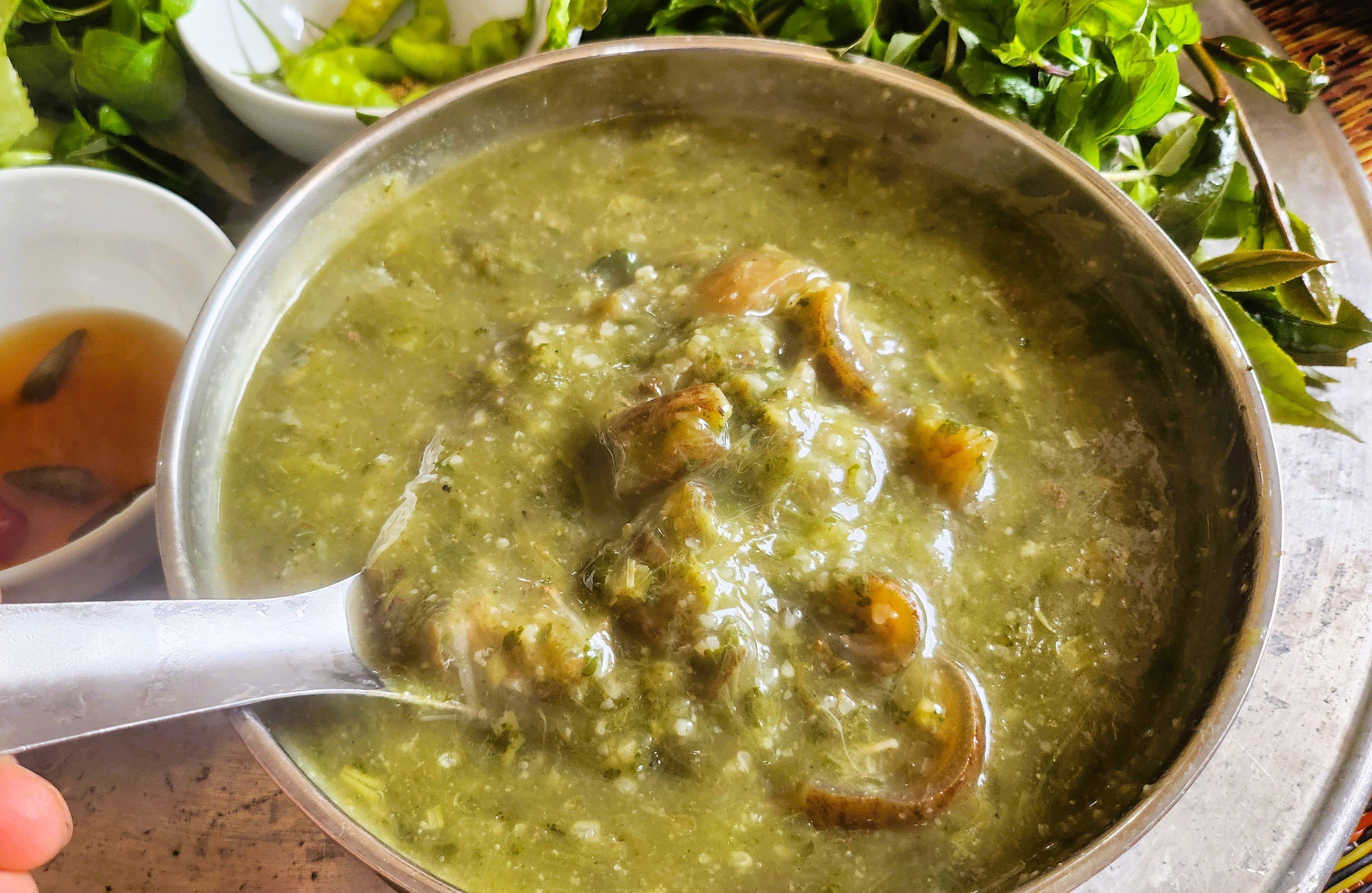
Buffalo skin taro soup, a unique dish of the Thai ethnic group in the highlands of Thanh Hoa
For the Thai people in Quan Son, Quan Hoa, Thuong Xuan, Ngoc Lac, Lang Chanh districts, this dish is often cooked in winter or on rainy days. Later, the dish became popular and is often cooked during holidays and Tet to help prevent boredom and stay alert when consuming a lot of alcohol and protein-rich foods.
To make this dish, the preparation of ingredients is very important. In particular, the two main indispensable ingredients are taro leaves and dried buffalo skin, spices such as sticky rice, mac khen seeds (wild fruit seeds), pepper, betel leaves, lemongrass, wild eggplant...
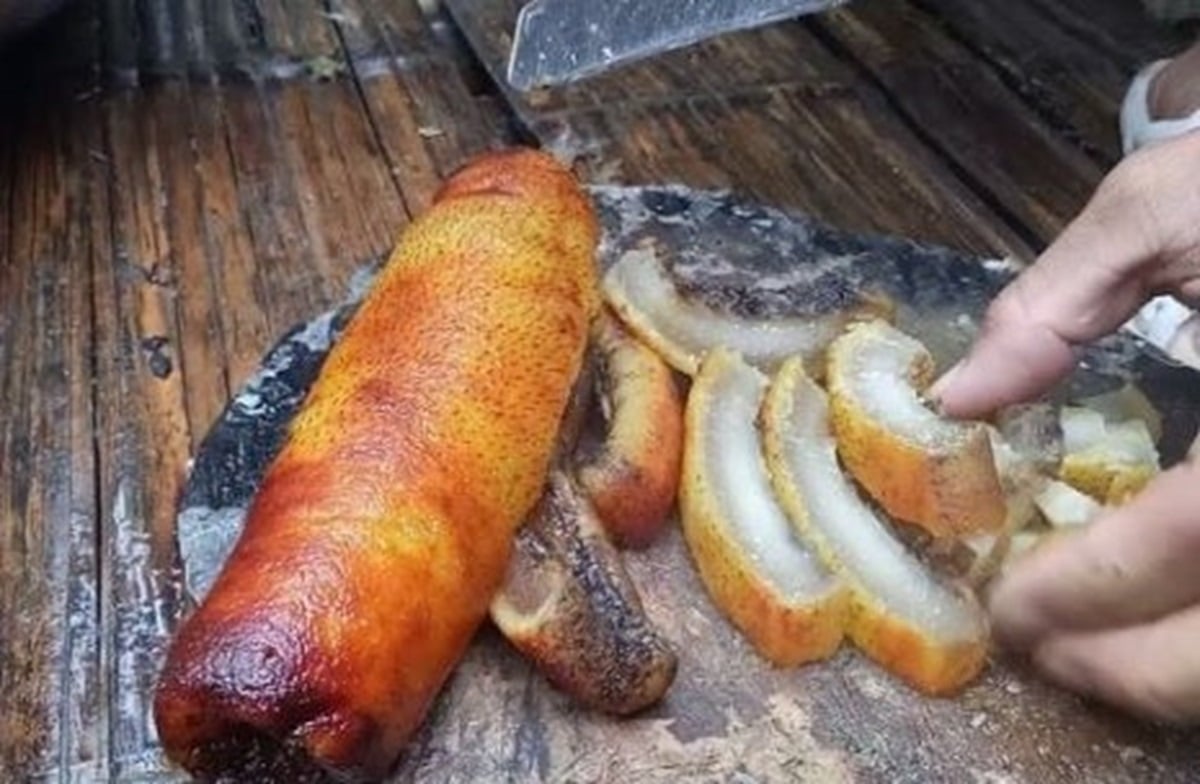
Buffalo skin is pre-processed before making taro soup.
Taro (some places call it bon tree) is a plant that is easy to grow in home gardens, along ponds, streams, or shallow lakes, where water flows back and forth all year round, because this plant has the characteristic of living in a humid environment. However, not all types of taro can be used to make dishes. If you choose the wrong type, it will cause itching when making and eating, so you need to choose the right type so that when preparing dishes, you do not get itchy.
As for buffalo skin, it is usually cooked with dried buffalo skin. These are pieces of buffalo skin that have been brought back by the locals and left in the kitchen for a long time, sometimes even a whole year. Therefore, to cook canh mon, the buffalo skin must go through many processing steps.
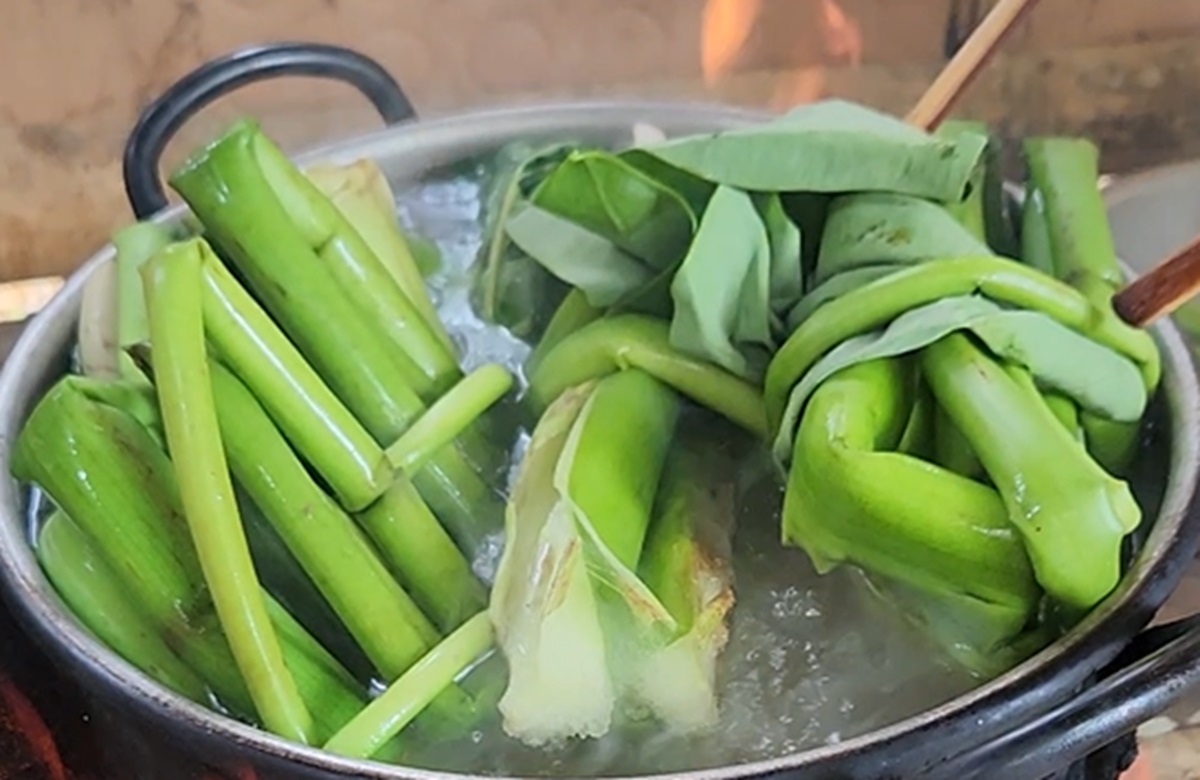
Taro is one of the main ingredients that make up this unique dish.
First, the buffalo skin, when taken down from the kitchen, will be grilled on the stove for about 15-20 minutes. Then, it is blanched in boiling water for about 2-3 minutes, removing all the soot (kitchen smoke), washed, cut into bite-sized pieces and simmered thoroughly (about 6-8 hours).
After several hours, when the buffalo skin is soft, add the taro leaves (both the plant and the leaves) into the pot and cook until the taro leaves in the pot are soft and smooth. At this point, add the sticky rice flour (soak the sticky rice for about 30 minutes, then take it out to drain and pound it) and stir well until the rice flour is cooked and mixed together until thick, then add the spices mac khen, pepper, lolot leaves, fish sauce, salt... and you can enjoy it.
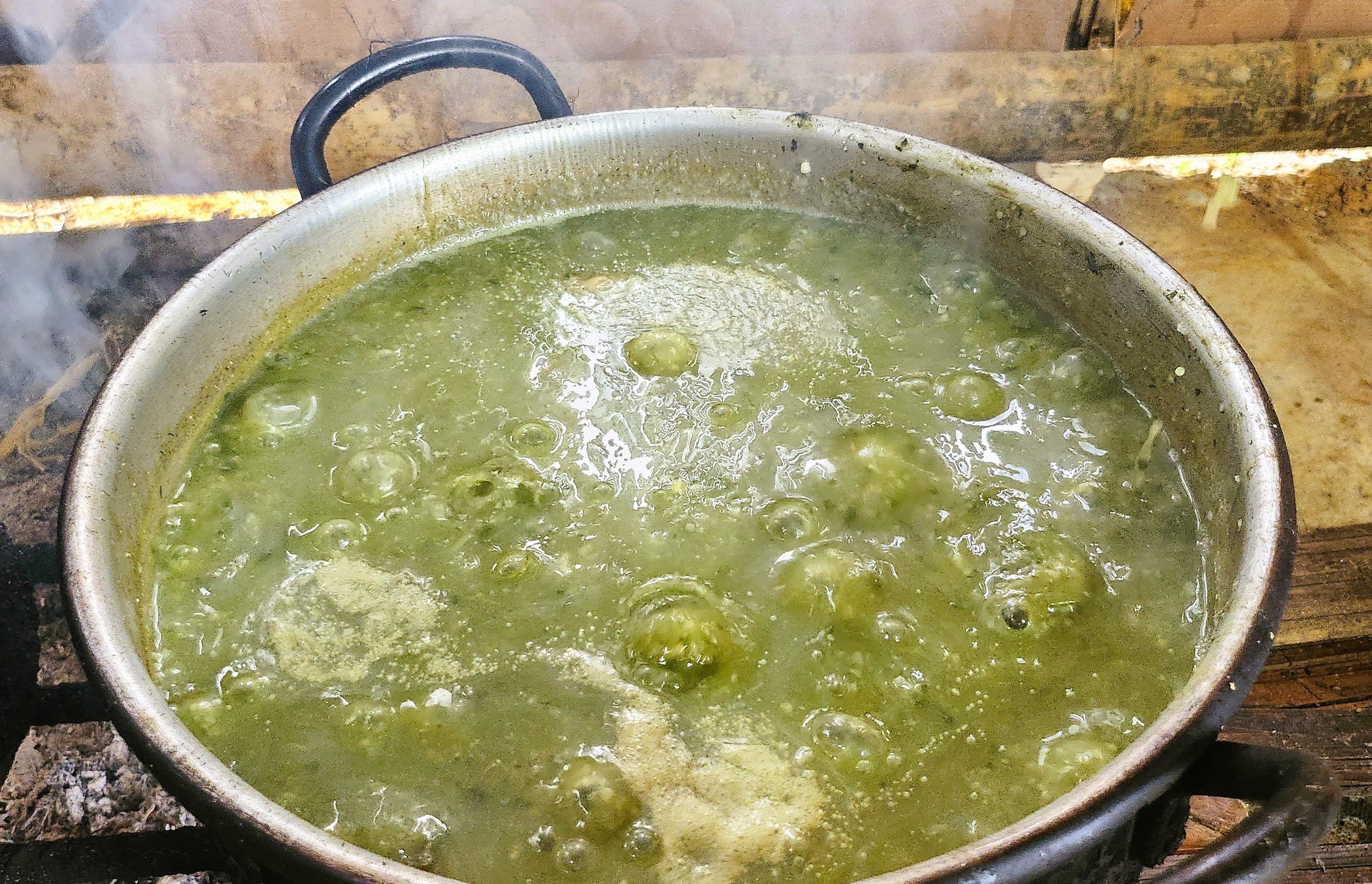
The pot of buffalo skin taro soup is done cooking and ready to enjoy.
"To make the taro soup more flavorful, depending on each person's preference, you can add a little pia to create a characteristic bitter taste. Taro soup cooked with dried buffalo skin has a refreshing, fragrant, and sweet and bitter taste. Not only present in family meals, the dish is also an indispensable culinary feature during festivals and New Year's of the Thai people in my hometown" - Ms. Ngan Thi Vui (Son Thuy commune, Quan Son district, Thanh Hoa province) shared.
According to Ms. Vui, nowadays, canh mon has become popular, many people can cook this dish. In the past, canh mon had to be cooked with buffalo skin, but now canh mon can be cooked with sea fish (dried fish) which is also very delicious, rich in the flavor of the mountains and forests. "For the Thai people in Thanh Hoa, canh mon often has sticky rice added. While in other places, dried fish, river bone leaves are often added... thereby creating different characteristic flavors of canh mon" - Ms. Vui said.

Anyone who has tried this unique dish will remember it forever.
Coming to Thanh Hoa, in addition to exploring the majestic natural beauty, culture, land and people here, if you have the opportunity, visitors should enjoy taro soup cooked with buffalo skin, to understand more about the land and people of the ethnic minorities in the highlands.
Source: https://nld.com.vn/doc-la-mon-canh-mon-da-trau-cua-nguoi-thai-xu-thanh-19625012621502123.htm
















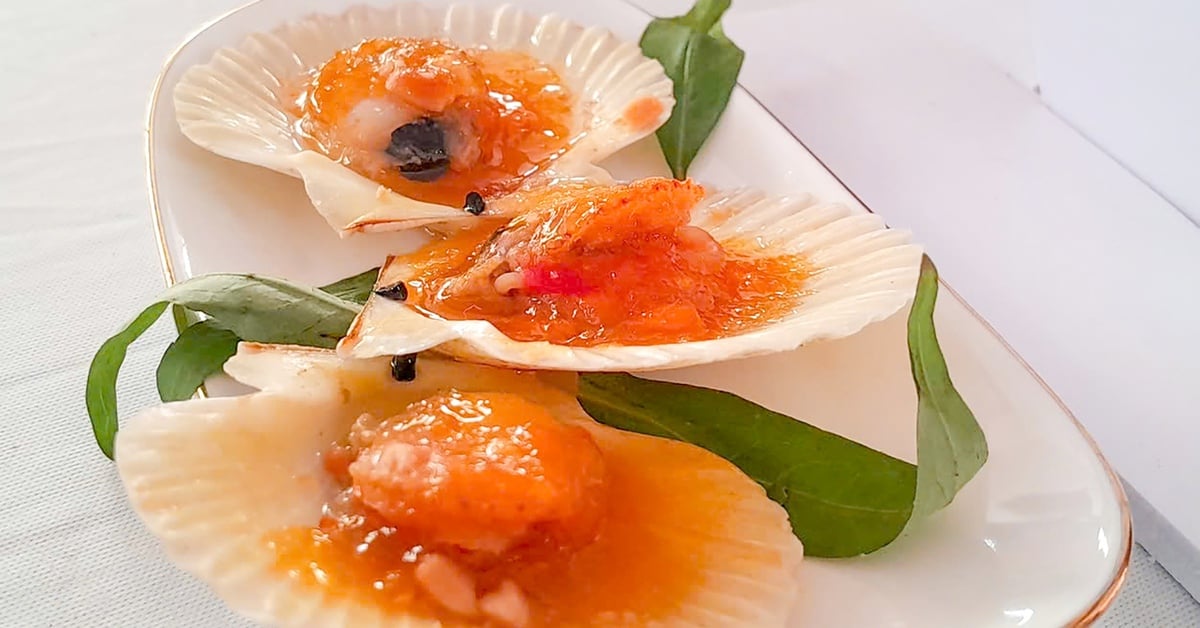
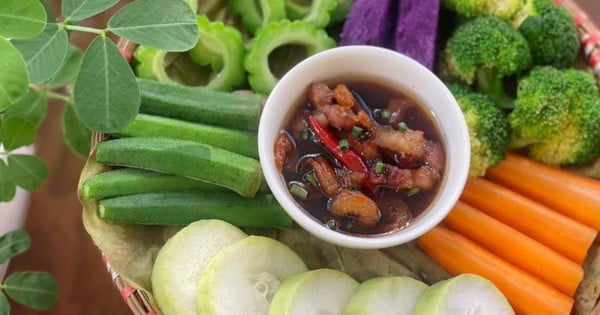
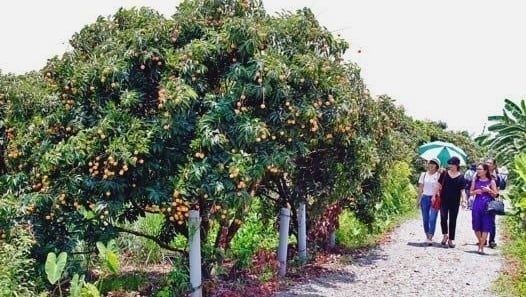
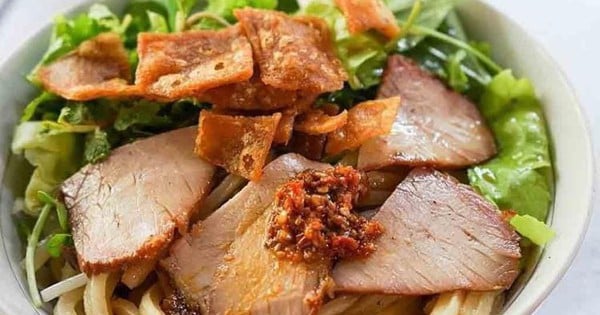
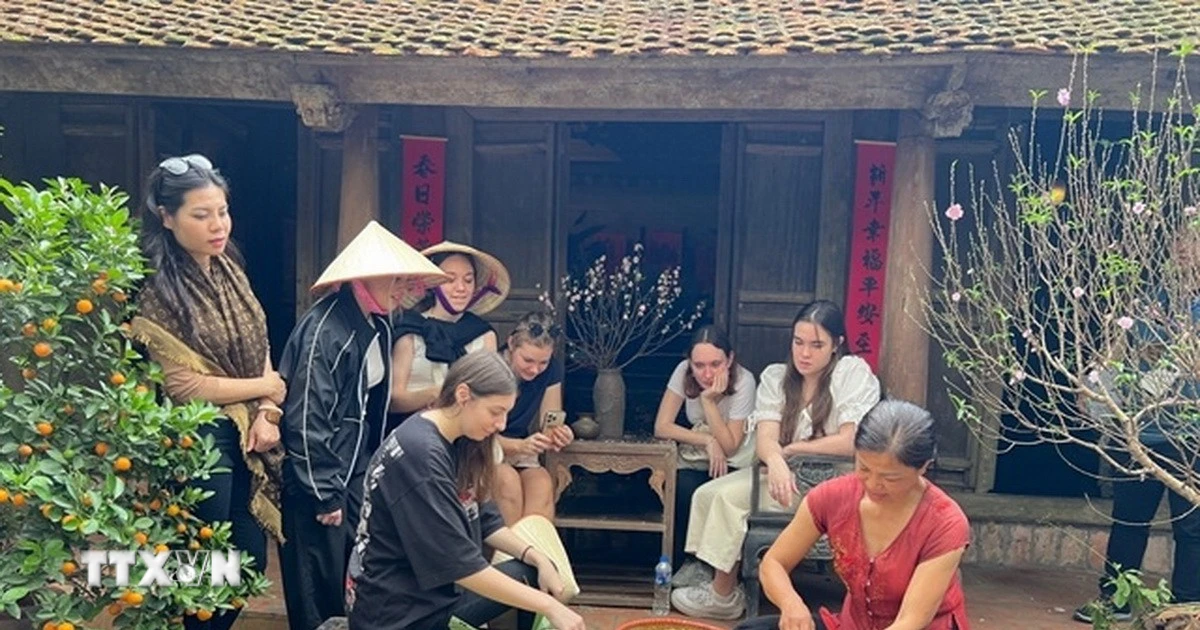



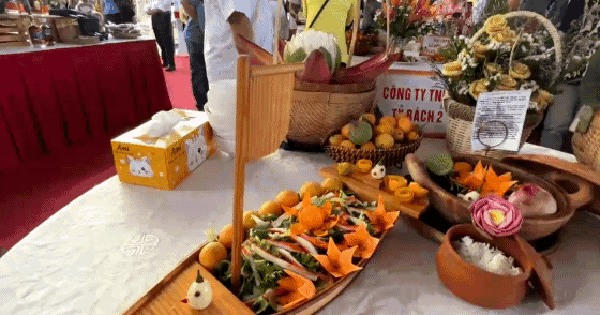





![[Photo] "Beauties" participate in the parade rehearsal at Bien Hoa airport](https://vstatic.vietnam.vn/vietnam/resource/IMAGE/2025/4/11/155502af3384431e918de0e2e585d13a)











































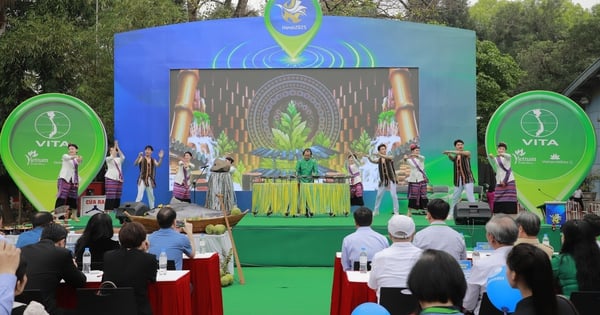



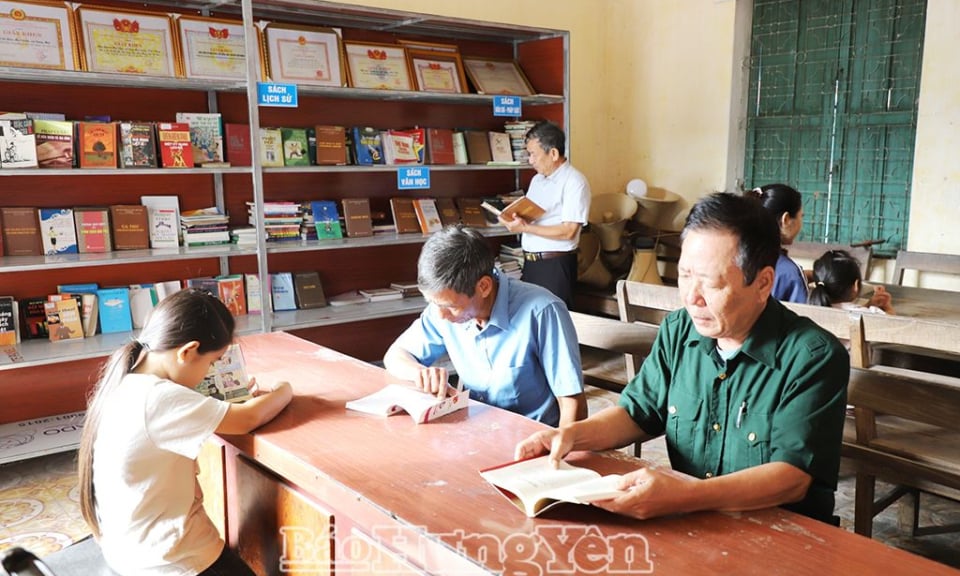














Comment (0)